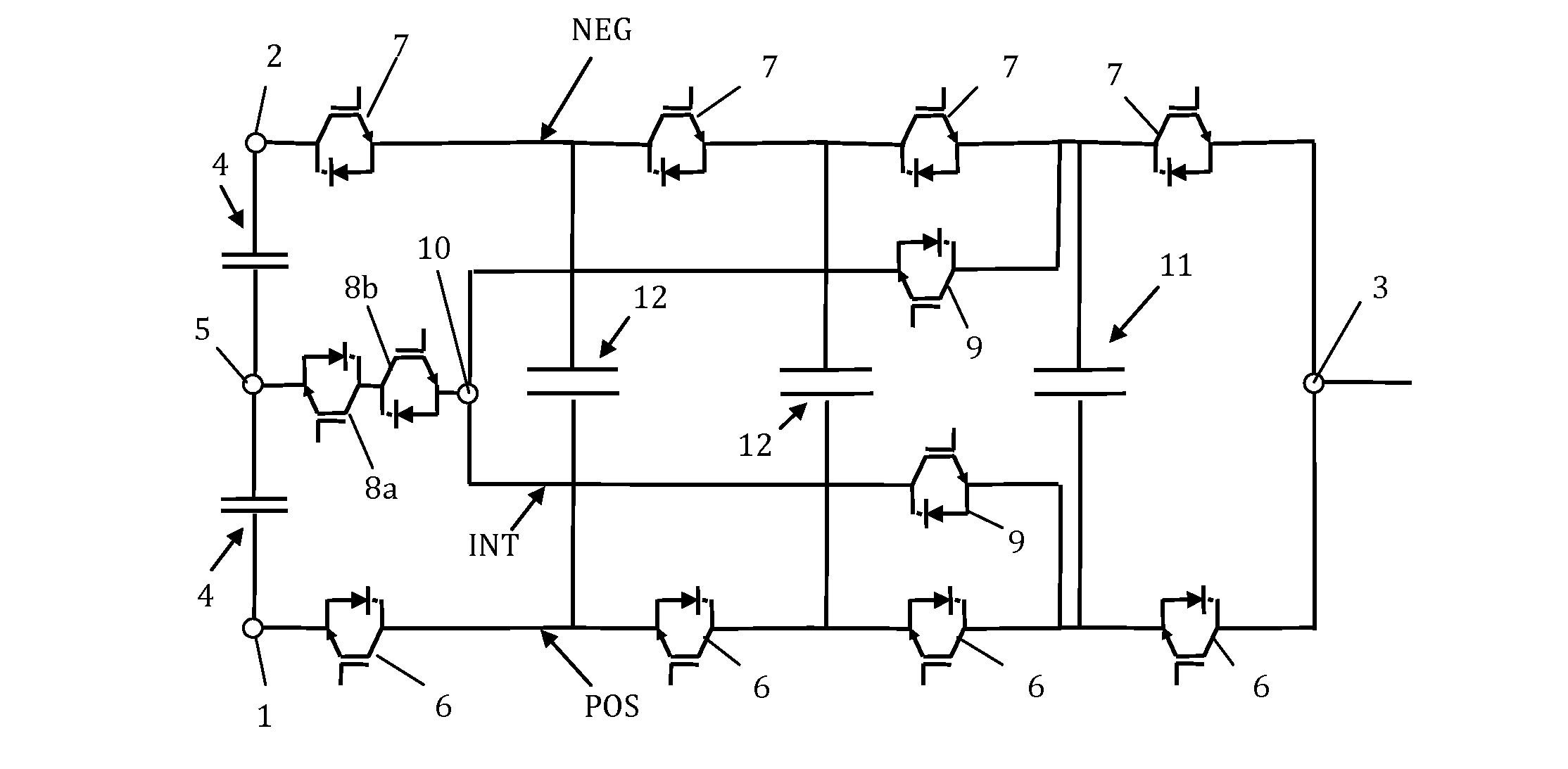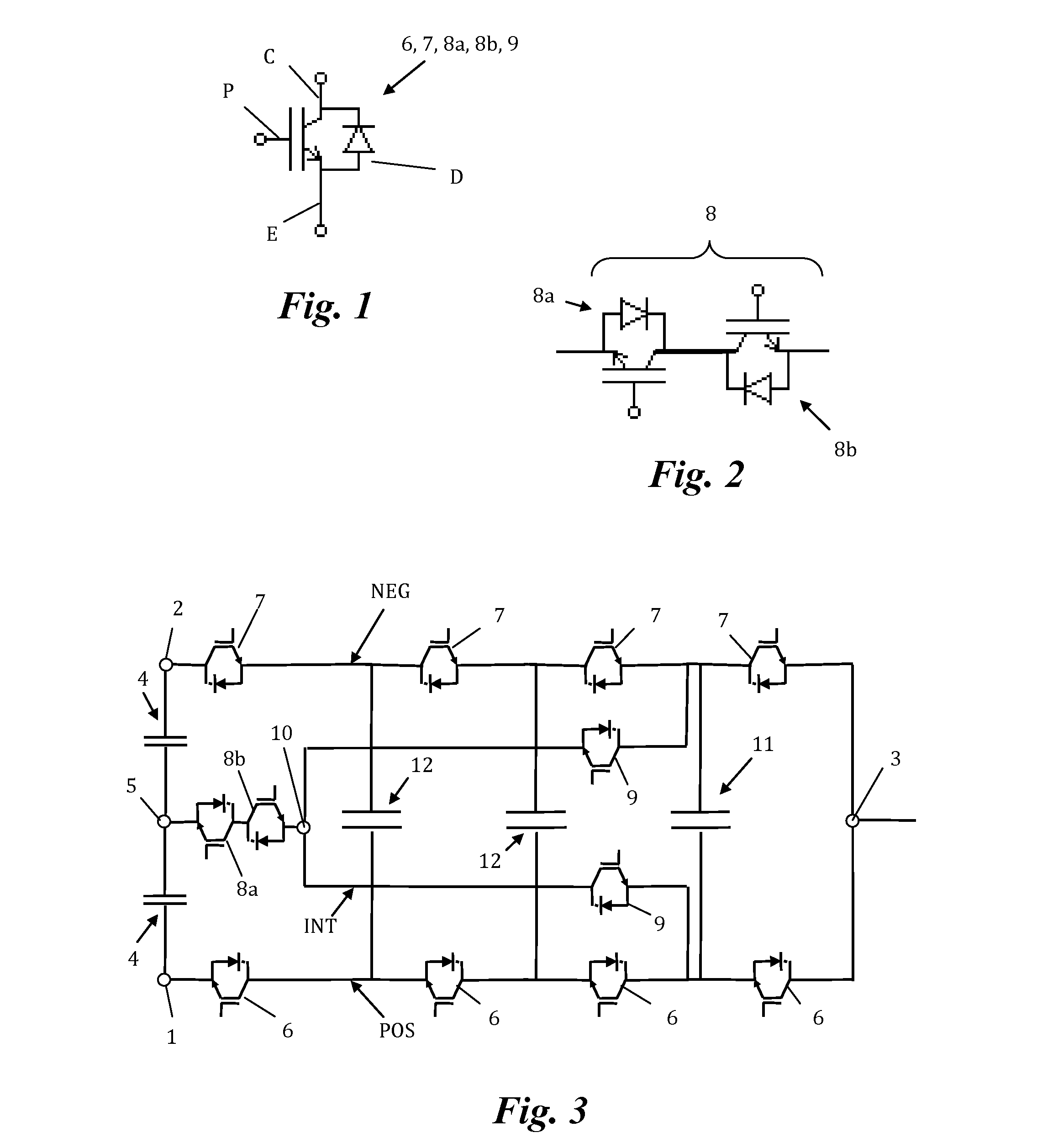Multilevel electronic power converter
a power converter and multi-level technology, applied in power conversion systems, ac-d ac network circuit arrangements, etc., can solve the problems of high cost, large size, excessively complicated and expensive electromechanical design, etc., and achieve the effect of achieving the size, design, cost, operation, and control. and attainable levels
- Summary
- Abstract
- Description
- Claims
- Application Information
AI Technical Summary
Benefits of technology
Problems solved by technology
Method used
Image
Examples
Embodiment Construction
[0010]The object of the present invention is to overcome the drawbacks of the state of the art detailed above by means of a multilevel electronic DC / AC or AC / DC power converter for n output voltage levels with
[0011]a positive branch with a positive DC voltage terminal, a negative branch with a negative DC voltage terminal, and an AC voltage terminal connected to the positive branch and to the negative branch; at least two DC bus capacitors interconnected between the positive DC voltage terminal and the negative DC voltage terminal, and an intermediate DC voltage terminal connected between the two DC bus capacitors; a plurality of first external controlled semiconductors with antiparallel diodes connected in series in the positive branch between the positive DC voltage terminal and the AC voltage terminal, and a plurality of second external controlled semiconductors with antiparallel diodes connected in series in the negative branch between the negative DC voltage terminal and the AC...
PUM
 Login to View More
Login to View More Abstract
Description
Claims
Application Information
 Login to View More
Login to View More - R&D
- Intellectual Property
- Life Sciences
- Materials
- Tech Scout
- Unparalleled Data Quality
- Higher Quality Content
- 60% Fewer Hallucinations
Browse by: Latest US Patents, China's latest patents, Technical Efficacy Thesaurus, Application Domain, Technology Topic, Popular Technical Reports.
© 2025 PatSnap. All rights reserved.Legal|Privacy policy|Modern Slavery Act Transparency Statement|Sitemap|About US| Contact US: help@patsnap.com



